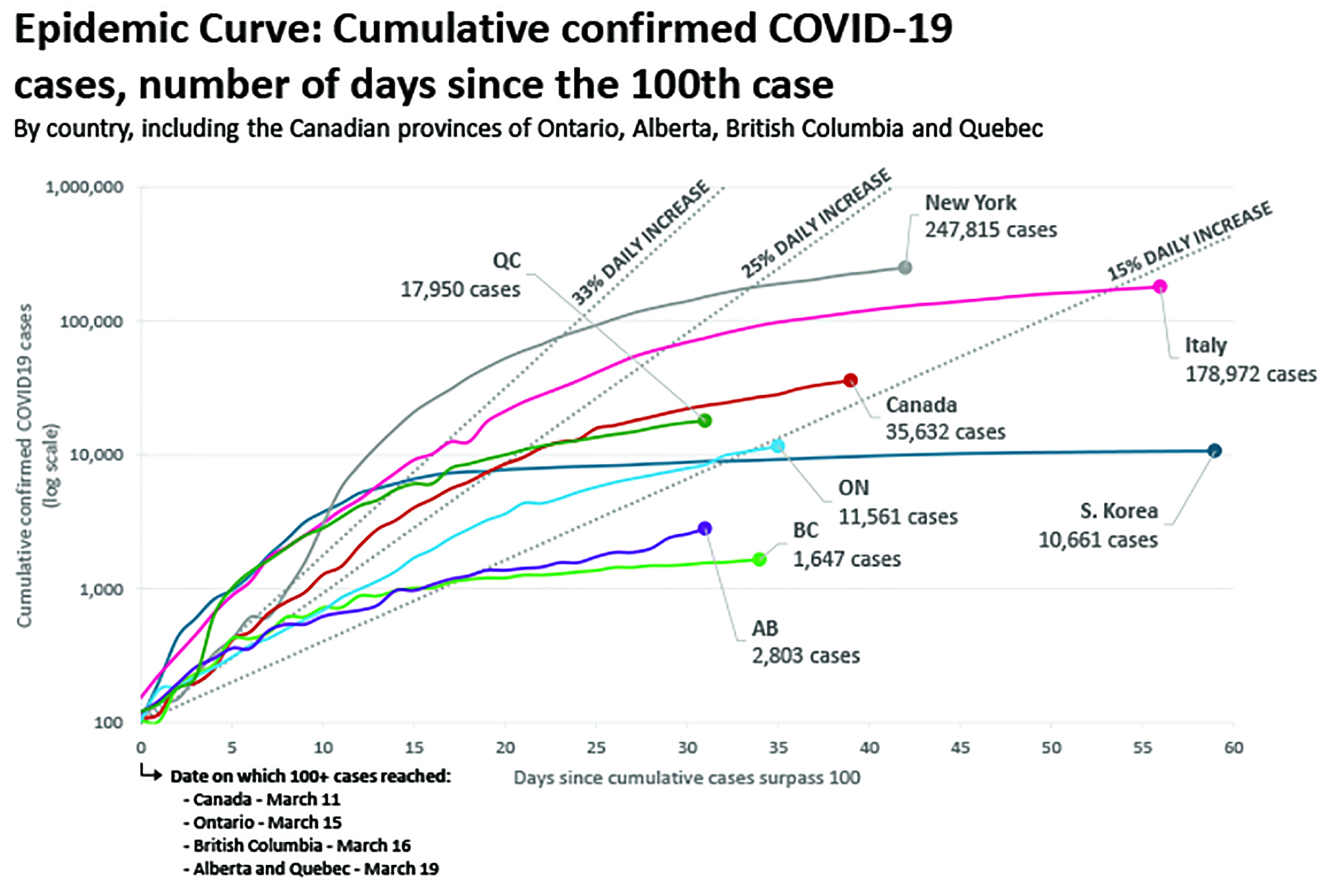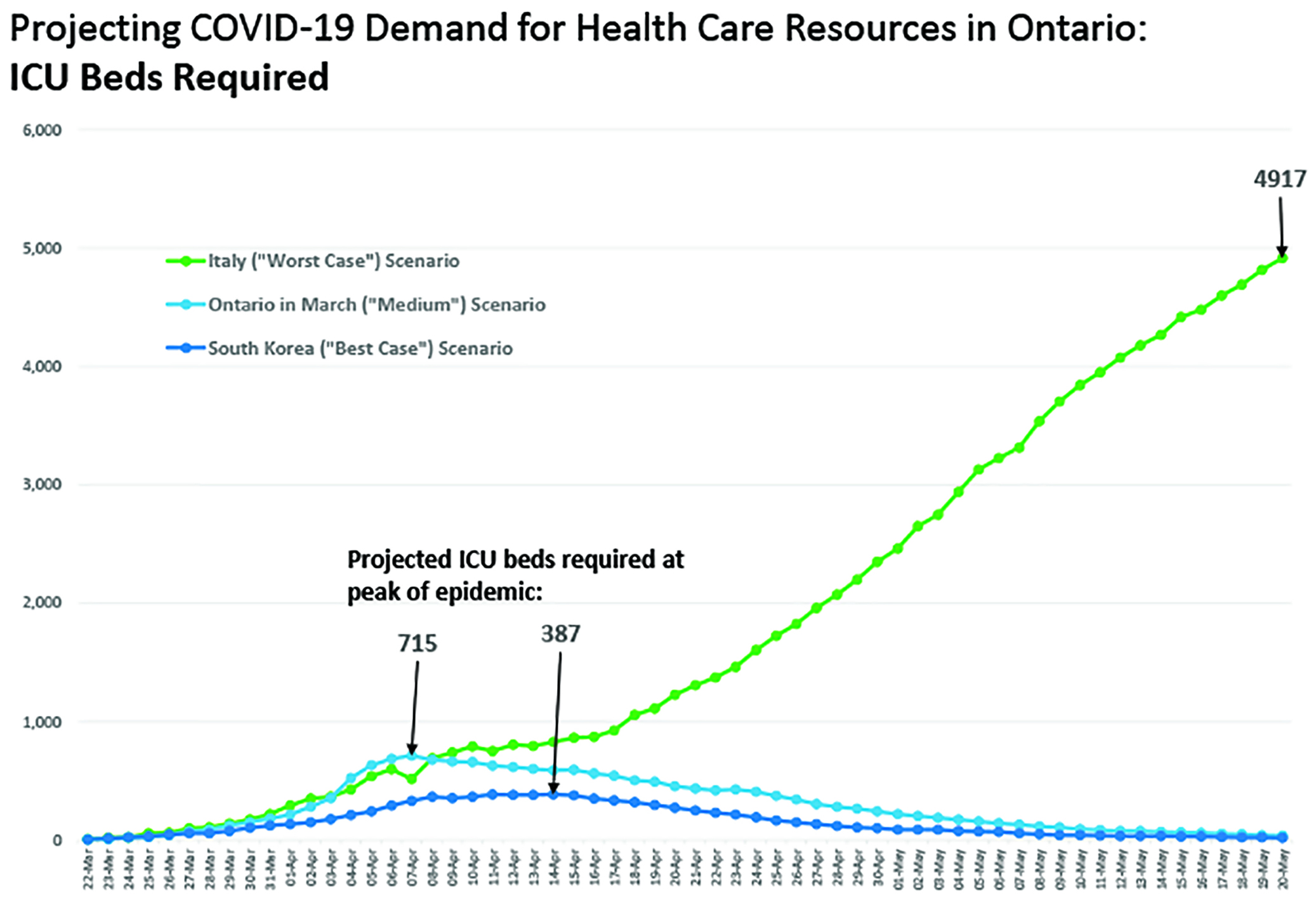TORONTO — According to health experts, it appears the COVID-19 outbreak in Ontario has peaked.
On April 20 the province released updated virus modelling that shows enhanced public health measures are working in “flattening the curve.”
Those measures include work from home, physical distancing and the closure of non-essential businesses.
“The modelling clearly demonstrates that we are making progress in our fight against this deadly virus,” said Premier Doug Ford.
“That’s due to the actions of all Ontarians, those who are staying home and practising physical distancing, and to the heroic efforts of our frontline health care workers.”
However, Ford added, COVID-19 “continues to be a clear and present danger, especially to our seniors and most vulnerable citizens.
“That is why we must continue to follow the advice of our Chief Medical Officer of Health and stay the course in order to keep people safe and healthy.”
Officials stated on April 20 that Ontario is now trending toward a best-case scenario and has significantly improved its standing compared to modelling provided in March.
As of Monday, Ontario reported 11,184 cases of the virus with 584 deaths.
According to the latest projections, cumulative cases for the span of the entire outbreak is less than 20,000, “substantially lower” than 80,000 cases previously predicted for the end of April and 300,000 cases over the course of the pandemic.

This slide shows how Ontario is faring in its battle against COVID-19 as compared to other provinces and countries. (Image: ontario.ca)
Hospitals have not been overwhelmed by the outbreak, as a result of the measures taken by the province and the efforts of all Ontarians, officials stated.
Despite the positive news on Monday, officials say it remains critical that Ontarians continue to adhere to public health measures, including staying home, practicing physical distancing, and only going out for essential trips such as for groceries or doctor’s visits.
“The information released today shows early but unmistakable signs that our efforts are working,” said Christine Elliott, Deputy Premier and Minister of Health.
“These numbers are not an accident. They are the result of months of planning and collective action to stop the spread of COVID-19 and flatten the curve.
“However, in order for these projections to become reality, each of us must continue to stay home as much possible and practise physical distancing.”
Long-term care, congregate settings still a concern
The province stated in its update that outbreaks in long-term care and congregate settings continue to be a major concern.
Last week the province announced the COVID-19 Action Plan: Long-Term Care Homes, a plan that includes increased testing, support to control outbreaks at long-term care homes and the redeployment of staff from hospitals and home and community care to support the long-term care home workforce.
The province also issued an emergency order last week that directs long-term care employers to ensure that their employees, including nurses, personal support workers and kitchen and cleaning staff, only work in one location.
“The new province-wide modelling data are encouraging, but we know that long-term care homes and other congregate settings will track on a different path,” said Dr. Merrilee Fullerton, Minister of Long-Term Care.
“We will continue to take aggressive action to support our most vulnerable residents and their caregivers.”

This slide shows how Ontario is faring versus the worst and best case scenarios, in terms of ICU beds required. (Image: ontario.ca)




